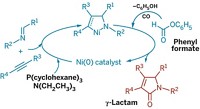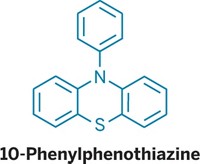Advertisement
Grab your lab coat. Let's get started
Welcome!
Welcome!
Create an account below to get 6 C&EN articles per month, receive newsletters and more - all free.
It seems this is your first time logging in online. Please enter the following information to continue.
As an ACS member you automatically get access to this site. All we need is few more details to create your reading experience.
Not you? Sign in with a different account.
Not you? Sign in with a different account.
ERROR 1
ERROR 1
ERROR 2
ERROR 2
ERROR 2
ERROR 2
ERROR 2
Password and Confirm password must match.
If you have an ACS member number, please enter it here so we can link this account to your membership. (optional)
ERROR 2
ACS values your privacy. By submitting your information, you are gaining access to C&EN and subscribing to our weekly newsletter. We use the information you provide to make your reading experience better, and we will never sell your data to third party members.
Materials
Anion To Radical To Polyarene
New chain-growth polymerization mechanism forms regioregular polyphenylenes for organoelectronic applications
by Stephen K. Ritter
November 12, 2012
| A version of this story appeared in
Volume 90, Issue 46
Researchers in Germany have taken advantage of the synergy between organic synthesis and polymer chemistry to develop a method for making structurally uniform polyphenylenes (Angew. Chem. Int. Ed., DOI: 10.1002/anie.201206096). These polymers have a growing number of applications in materials science, such as thin films for organic light-emitting diodes. Sandip Murarka and Armido Studer of the University of Münster used either the tetramethylpiperidine-based nitroxide radical called TEMPO or O2 from air to initiate oxidation of alkyl- or alkoxy-substituted iodoarene Grignard reagents. The subsequent polymerization proceeds via a “crossover” mechanism in which the active end of the growing polymer chain alternates between anionic and radical intermediates as each new monomer unit is added. In the past, researchers have been able to chemically control anion-to-radical crossover or vice versa, but the ability to regularly alternate between the two processes is unprecedented. The Münster method avoids transition-metal catalysts, which can be expensive and require sophisticated purification procedures to prevent residual metal from disrupting the polymer structure. Murarka and Studer used the approach to make poly(m-phenylene), poly(p-phenylene), and polynaphthalene, as well as styrene block copolymers, all end-capped with reactive functional groups.





Join the conversation
Contact the reporter
Submit a Letter to the Editor for publication
Engage with us on Twitter